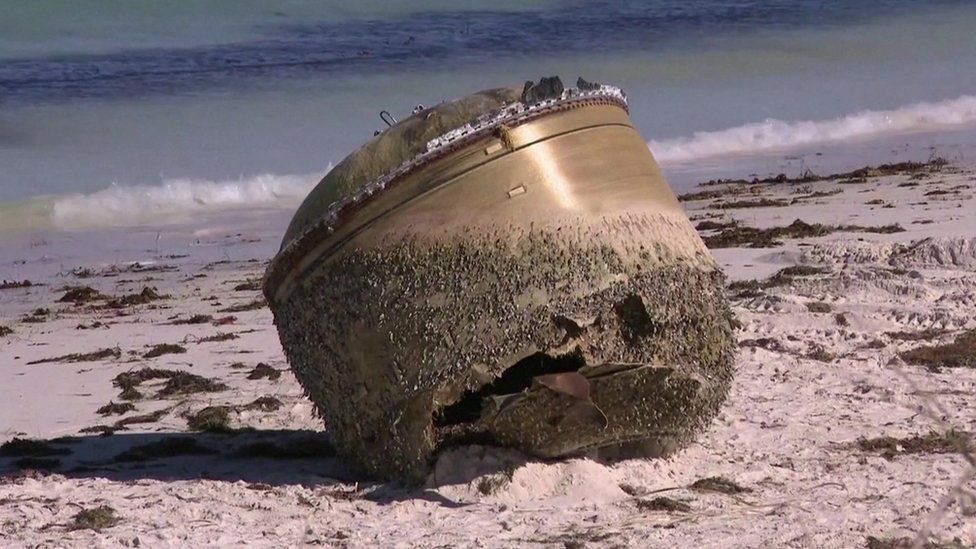Space junk: India says object found in Australia is theirs

India has confirmed that an object that washed up on a Western Australian beach recently was from one of its rockets.
The giant metal dome was found at Green Head beach, about 250km (155 miles) north of Perth, in mid-July - prompting speculation about its origins.
India's space agency spokesman told the BBC on Monday it was from one of its Polar Satellite Launch Vehicles (PSLV).
Sudhir Kumar added that it would be up to Australia to decide what to do with the object. He did not comment further.
His comments came after the Australian Space Agency (ASA) on Wednesday said that the object was "most likely" the third stage of a PSLV, which are used by India to launch satellites into orbit.
Countries often plan for debris from their launches to land in oceans to prevent them damaging people and property.
Dr Alice Gorman, a space archaeologist and Associate Professor at Australia's Flinders University, said that while there are often serial numbers on components, it was also possible to identify debris based on appearance.
The ASA said it was working with India's space agency to "determine next steps, including considering obligations under the United Nations space treaties".
The BBC has approached the agency for further comment.
According to the UN Office for Outer Space Affairs, countries are required to return any "foreign" space objects found in their territory to the owners.
Dr Gorman said that there were many reasons why a country would want debris back, such as mission analysis.
In this case, however, she said there would be no benefit in India retrieving the object.
Western Australia has already indicated it would be happy to keep it.
The state's premier, Roger Cook, suggested to local media that the object could be stored in the state museum alongside debris from Nasa's Skylab station, which was discovered in 1979.
Locals said they might be interested in turning it into a local tourist attraction, according to the Australian Broadcasting Corporation (ABC).
Dr Gorman said another option would be to put in a park, adding: "Things that have been in space have this kind of aura and to touch something that has been in space would be a bit special."
The object is currently in storage with the ASA. It is still not clear which mission it was used in, nor how long it had been in the water before washing up at Green Head.
Experts estimated that it would have been at least a few months. The debris was covered with barnacles.
There were initially concerns about potentially dangerous toxins leaking from the object if it was found to be part of a rocket.
However, the authorities later determined it was not a risk to the public.
The ASA has asked that any members of the public who finds further suspected debris should get in contact with them.
It is not the first time that space junk has landed in Australia. Last year, a chunk from one of Elon Musk's Space X missions was found in a paddock in the state of New South Wales.
No comments:
Post a Comment